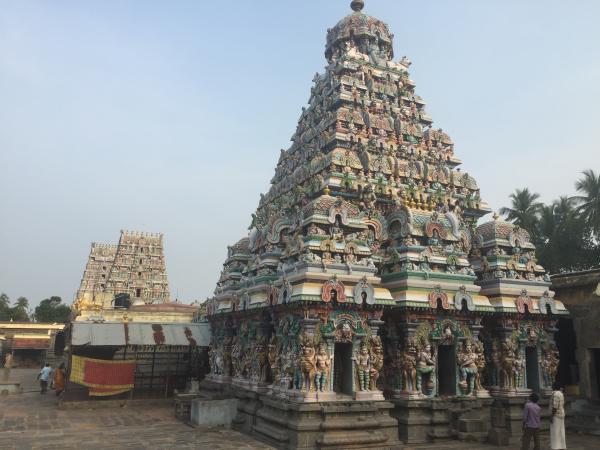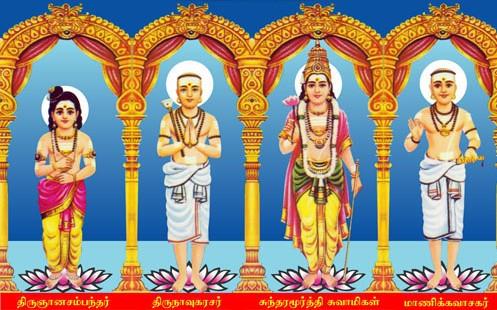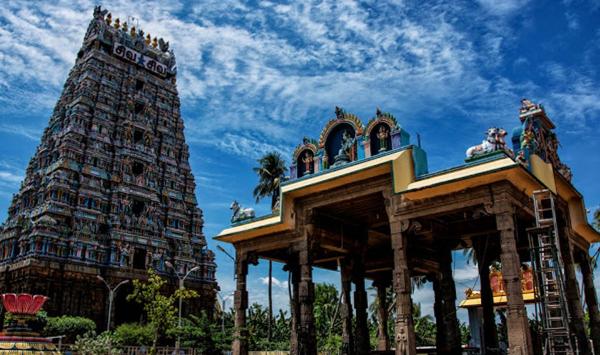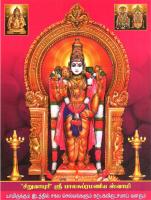Thiruvathigai Veerateeswarar Temple is one of the 275 prominent temples (Padal Petra Sthalangal) dedicated to Lord Shiva. It is situated in Thiruvathigai village which is about 2 kilometres east from the town of Panruti. Shiva is worshiped as Veerattaaneswarar, and his consort Parvati is depicted as Thiripurasundari in this temple. This temple is considered the place where the Saint poet Appar (Thirunavukkarasar) converted back to Saivism from Jainism and attained final salvation.

The temple complex is one of the largest in the state and it houses two gateway towers known as gopurams. The temple has numerous shrines, with those of Veerateeswarar and Thiripurasundari being the most prominent. The temple complex houses many halls and three precincts. The temple is maintained and administered by Thiruvaduthurai Adheenam, a South Indian monastic institution.

Legend holds that this temple is the place where Shiva destroyed three rakshashas and the three cities created by them. Saranarayana Perumal, another name of Vishnu, is the one who gave the arrow to Shiva for killing the demons, whose temple is also located in the town, little easterly. Shiva Purana details the legend of destruction of the demon Tripuran, who was ruling Tripura. The destruction is detailed as a cosmic event, which most attribute to the destruction of stars, meteors and unexplained material bodies. Tripuran attacked all the celestial deities who sought the help of Shiva to protect them. Shiva after a fiery fight, destroyed Tripuran and attained the name Tripurantaka. Shiva ashed down the city Tripura and dipped his three fingers in the ashes, which signifies the three lines of ash which is worn by all shaivites on their forehead.

As per another variant of legend, the three sons of Taraka obtained boons from Brahma and built an impregnable fortress on earth. On account of their atrocious activities, mother earth prayed to Shiva for rescue. Shiva burnt down the fort and was about to attack the trio, but they begged for mercy. He made two of them as Dvarapalas and one as his damaroo, which he sports in his right hand. The whole incident is believed to have taken place in Thiruvathigai on the banks of river Kedilam.
The Pallava king Mahendravarman I converted from Jainism to Saivism under the influence of Appar. He is believed to have destroyed a Jain monastery and built a temple called Gunavareswaram close to the temple. Mahendra Pallava is believed to have attained the name Gunavareswara on account of the incident. A king called Kalinkaraya is believed to have endowed lot of treasures and built various structures in the temple as seen from the inscriptions in the temple. King Raja Raja Chola I is believed to have stayed in this temple for a long time to study the architecture before building Brihadeeswarar Temple.
Appar's sister Thilakavathiyar settled here during her later years and devoted her lifetime service to Shiva. Afflicted by a painful stomach illness, Thirunavukkarasar, who was originally called Dharmasenar and was then a staunch follower of Jainism, prayed for relief at this temple where his sister Thilagavathiyar served. By the divine grace of Shiva, he was cured. He embraced Saivism from then and started canonizing various temples with his verses. The ruling Pallava king namely Kadava who was also a Jain, punished Thirunavukarasar in various ways and finally dropped him in a lime kiln. He was subsequently cast on the waters of sea, where he started floating and was pushed ashore in Thirupathipuliyur. It is believed that some of his best songs were sung at this time in praise of the presiding deities at Padaleeswarar temple and Veerateneeswarar temple. Thirunavukkarasar came back to Thiruvathigai from Thirupathripuliyur. Influenced by the greatness of the poet, the king himself converted to Shaivism. Appar venerated Veerateeswarar in seventeen verses in Tevaram, compiled as the Fourth Tirumurai, Fifth Tirumurai and Sixth Tirumurai. The Soolai Kinaru, a well in the temple is believed to be the limestone well where Appar was dropped by the Jains. Though the actual location was in Cuddalore, the well is maintained as an indicative example of the event. The water from the well is taken by people suffering from stomach related ailments.
Tirugnana Sambandar, a 7th-century Tamil Saivite poet and a contemporary of Appar, venerated Veerateeswarar in 46 verses in Tevaram, compiled as the First Tirumurai. According to the Hindu legend Sambanthar had a vision of cosmic dance of Shiva at this place.












Leave a Comment